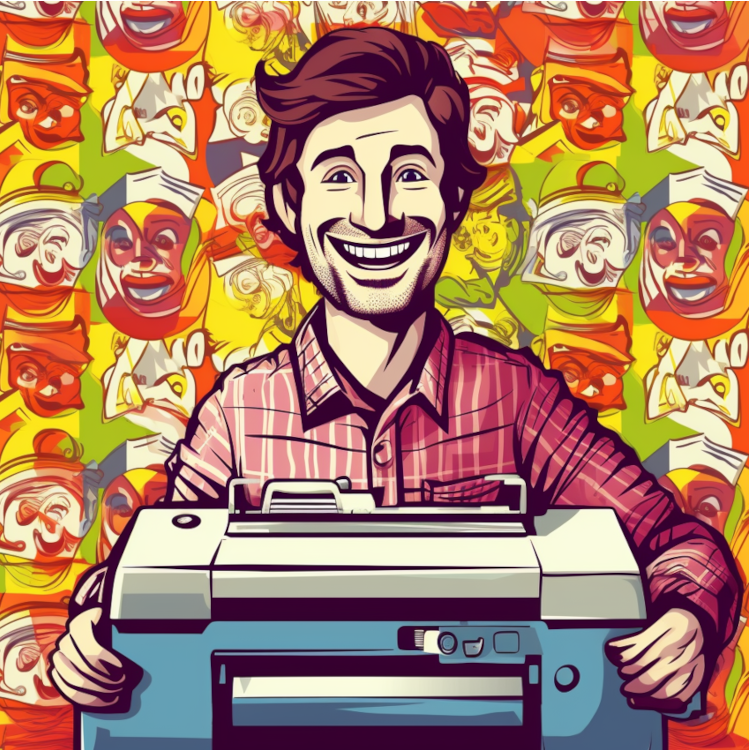


If you want to succeed in today's competitive online landscape, it's crucial to create content that resonates with your target audience and helps you stand out from the crowd. But how can you ensure that your content is discoverable and visible to the people who matter most – your potential customers? That's where the semantic core and keyword research come in. By identifying the words and phrases that your target audience is searching for, you can create content that is optimized for search engines and designed to meet their needs. By using the logical connection between your semantic core and keywords, you can develop a content strategy that helps you attract and retain customers, build brand awareness, and grow your business online. So, don't miss out on this opportunity – start using the power of semantic core and keywords to create content that helps you achieve your business goals today!
Before you start to create your content by using the right keywords and phrases, please do remember (!) :
The semantic core refers to the set of words or phrases that are the most important and relevant to the content of a piece of text. In the context of search engine optimization (SEO), the semantic core of a website or webpage is the group of keywords and phrases that are used to describe the main topics and themes of the content.
Developing a strong semantic core is important for SEO because it helps search engines understand the relevance and significance of the content on a webpage. By including relevant keywords and phrases in the content, meta tags, and other on-page elements, website owners can improve their chances of ranking higher in search engine results pages (SERPs) for queries related to their business or industry.
Design: The primary keyword that encompasses the process of creating and visualizing the aesthetics, functionality, and structure of products, services, or experiences. Design can refer to various disciplines such as graphic design, industrial design, web design, and more.
Graphic design: The art of creating visual elements, layouts, and compositions to communicate messages or ideas. Graphic design involves the use of typography, color, images, and other visual elements to create designs for print or digital mediums.
User experience (UX) design: Focuses on enhancing the overall experience of users when interacting with a product, service, or website. UX design involves understanding user needs, conducting user research, and creating intuitive and user-friendly designs.
User interface (UI) design: Concerned with designing the visual and interactive elements that users engage with when using a product or website. UI design focuses on creating aesthetically pleasing and functional interfaces.
Web design: The process of designing and creating the visual appearance, layout, and user experience of websites. Web design encompasses various elements such as typography, color schemes, navigation, and responsive design.
Industrial design: Refers to the design and development of physical products, such as consumer electronics, furniture, appliances, and automobiles. The industrial design combines aesthetics, functionality, and usability to create innovative and appealing products.
Product design: The process of conceptualizing and creating new products or improving existing ones. Product design involves considering factors such as user needs, market trends, materials, ergonomics, and manufacturing processes.
Packaging design: The design of product packaging to enhance its visual appeal, communicate brand identity, and protect the product. Packaging design involves considerations such as materials, labeling, graphics, and sustainability.
Branding design: The visual representation and expression of a brand's identity, including its logo, color palette, typography, and overall visual style. Branding design aims to create a consistent and recognizable brand image.
Motion design: Focuses on creating visually engaging and animated designs, often used in videos, motion graphics, and user interface animations. Motion design brings designs to life through movement and dynamic visual elements.
Print design: The design of materials intended for print, such as brochures, flyers, posters, business cards, and magazines. Print design involves considerations such as layout, typography, color, and print production processes.
Architectural design: The design and planning of buildings, structures, and spaces. The architectural design considers factors such as aesthetics, functionality, sustainability, and safety.
Interior design: The design of interior spaces to create functional, aesthetically pleasing, and harmonious environments. Interior design involves considerations such as furniture, lighting, colors, textures, and spatial arrangements.
Brand identity design: The creation of a comprehensive visual system that represents a brand's personality, values, and positioning. Brand identity design includes logos, typography, color palettes, and brand guidelines.
Experience design: A holistic approach to design that focuses on creating seamless and meaningful experiences across different touchpoints. Experience design considers user interactions, emotions, and perceptions throughout the entire customer journey.
Print media services: The primary keyword that encompasses the range of services related to printed materials, such as newspapers, magazines, brochures, flyers, and other tangible media formats.
Printing services: Refers to the professional printing and production of various printed materials, including business cards, stationery, catalogs, promotional materials, and packaging.
Offset printing: A traditional printing technique that uses metal plates to transfer ink onto paper. Offset printing is known for its high-quality and cost-effective production of large print runs.
Digital printing: The printing method that involves transferring digital files directly onto various surfaces, eliminating the need for printing plates. Digital printing offers flexibility, fast turnaround times, and cost-effectiveness for smaller print runs.
Graphic design: The creation of visual elements, layouts, and compositions to communicate messages or ideas. Graphic design is essential for print media services to ensure visually appealing and effective designs.
Layout design: The arrangement and organization of content, images, and graphical elements within a printed piece. Layout design focuses on creating a visually appealing and structured presentation of information.
Typesetting: The process of arranging text and adjusting its formatting, font size, and spacing to ensure readability and aesthetic appeal. Typesetting plays a crucial role in print media services for clear and visually appealing typography.
Print production: The process of managing and overseeing the production of printed materials. Print production includes tasks such as file preparation, color management, proofing, and coordinating with printing vendors.
Pre-press services: The preparation of digital files for printing, including file optimization, color correction, and proofing. Pre-press services ensure that printed materials maintain the desired quality and accuracy.
Large format printing: Printing on larger-sized materials, such as banners, posters, signage, and trade show displays. Large-format printing enables the creation of attention-grabbing and visually impactful printed materials.
Finishing services: Additional services performed after printing, such as cutting, folding, binding, laminating, or embossing. Finishing services add a professional touch and enhance the functionality and durability of printed materials.
Print marketing collateral: Printed materials used for marketing purposes, including brochures, flyers, postcards, and catalogs. Print marketing collateral helps businesses promote their products or services effectively.
Promotional products: Tangible items imprinted with a brand's logo or message, such as pens, mugs, T-shirts, or tote bags. Promotional products serve as marketing tools to increase brand visibility and customer engagement.
Print advertising: Advertising campaigns are executed through print media, such as newspaper ads, magazine ads, or print inserts. Print advertising allows businesses to target specific audiences and reach readers in their preferred publications.
Direct mail services: Print media services that involve designing, printing, and mailing targeted promotional materials to a specific audience. Direct mail can include postcards, catalogs, newsletters, or personalized letters.
Promotional products: The primary keyword that encompasses tangible items imprinted with a brand's logo or message, used to promote a business, organization, or event. Promotional products are distributed to target audiences as marketing tools.
Branded merchandise: Refers to a wide range of products, including apparel, accessories, office supplies, and gadgets, that are customized with a brand's logo or messaging. Branded merchandise helps increase brand visibility and recall.
Corporate gifts: Promotional products given by businesses to clients, employees, or partners as tokens of appreciation or to strengthen relationships. Corporate gifts are often personalized and of higher value than standard promotional items.
Promotional giveaways: Low-cost items distributed as freebies at events, trade shows, or marketing campaigns to generate brand awareness and engage with potential customers. Promotional giveaways are often imprinted with a logo or contact information.
Custom promotional products: Promotional items that are specially designed and produced according to specific brand requirements, including unique shapes, colors, or materials. Custom promotional products help businesses stand out and reinforce brand identity.
Imprinted merchandise: Products on which a brand's logo, slogan, or message is printed or engraved. Imprinted merchandise serves as a visual representation of a brand and helps promote brand recognition.
Advertising specialties: Unique and memorable promotional products used in marketing and advertising campaigns to leave a lasting impression on recipients. Advertising specialties often have creative designs or functionalities that align with the brand's message.
Trade show giveaways: Promotional products distributed at trade shows or exhibitions to attract booth visitors, increase brand exposure, and generate leads. Trade show giveaways can range from small trinkets to useful items related to the industry.
Promotional clothing: Apparel items, such as T-shirts, hats, or jackets, that are customized with a brand's logo or artwork. Promotional clothing turns recipients into walking brand ambassadors and helps create a sense of unity at events.
Personalized promotional items: Promotional products that are individually customized with the recipient's name or other personal details. Personalization adds a personal touch and enhances the perceived value of the item.
Eco-friendly promotional products: Promotional items that are made from sustainable materials or have minimal environmental impact. Eco-friendly promotional products align with a brand's commitment to sustainability and resonate with environmentally conscious audiences.
Promotional tech gadgets: Technological devices or accessories customized with a brand's logo, such as USB drives, power banks, or Bluetooth speakers. Promotional tech gadgets appeal to tech-savvy audiences and offer practical utility.
Promotional drinkware: Imprinted items such as mugs, water bottles, or tumblers used for promoting a brand. Promotional drinkware is popular due to its high visibility and frequent use by recipients.
Novelty promotional items: Unique and unconventional promotional products designed to grab attention and create a memorable brand experience. Novelty promotional items often have creative designs, playful elements, or unexpected functionalities.
Promotional product campaigns: Coordinated marketing efforts centered around using promotional products to achieve specific objectives, such as increasing sales, launching a new product, or boosting brand recognition. Promotional product campaigns involve strategic planning, distribution, and measurement of results.
By incorporating carefully chosen keywords into your business profile in our catalog, you can significantly improve your search rankings and attract more relevant leads. Think of these keywords as your secret weapon for reaching the right customers at the right time.
Unlock the true potential of your business with Mapolist – where strategic keywords and success go hand in hand. Sign up now and let the world find you!

We use cookies
We use cookies and other tracking technologies to improve your browsing experience on our website, to show you personalized content and targeted ads, to analyze our website traffic, and to understand where our visitors are coming from. Privacy Policy.